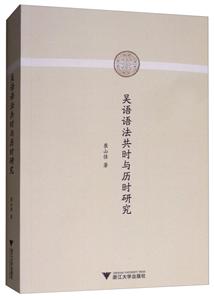
作者:宋蔚
页数:180页
出版社:上海交通大学出版社
出版日期:2019
ISBN:9787313194268
电子书格式:pdf/epub/txt
内容简介
本书为“当代外语研究论丛”系列之一。本书是最简方案理论下的否定极性项(negativepolarityitems:NPI)的允准和历史演变的研究。本书运用Chomsky的一致系统,创立了独有的否定句中NPI的允准机制。确立了条件句、比较句、疑问句、定语从句等环境中NPI的允准机制。在解决各种环境中NPI允准问题的同时,验证了这个运用否定特征和焦点特征的NPI允准机制的合理性和必要性。另外运用YCOE、PPCME2、PPCEME等语料库对NPI的any和相关现象进行数据收集和分析,并从历史语言学的角度提出了英语史中各时期NPI的允准机制和叶氏周期的第二阶段(即ne和not共同出现表示否定的阶段)的否定的允准机制。本书读者对象为从事形式语言学,特别是生成语法研究的学者和研究生,以及对否定极性项和历时语言学感兴趣的研究者。
本书特色
本书在生成语法最简方案理论框架下研究否定极性项的句法生成机制和历史演变。本书基于Chomsky(2000,2001,2007,2013)的理论,运用否定特征和焦点特征,确立了否定句、条件句、比较句、一般疑问句、定语从句等环境中NPI的句法生成机制。在解决各种环境中NPI句法问题的同时,验证了本书提出的NPI句法生成机制的合理性和必要性。另外,本书运用英语历史语料库YCOE,PPCME2,PPCEME对any的NPI用法和相关现象进行了数据收集和分析,并从历史语言学的角度提出了英语史中各时期NPI的句法生成机制和叶氏周期的第二阶段(即ne和not共同出现表示否定的阶段)的句法生成机制。本书运用了最简方案理论、历时研究方法以及英语历史资料和语料库,是对英语否定极性项的句法和历史演变的创新型研究,适合形式语言学和历史语言学方向的研究生以及对否定极性项和叶氏周期等感兴趣的研究者参阅。
目录
1.1 Introduction to Negative Polarity Items
1.2 Problems with Analyses from a Semantic Perspective
1.2.1 NPIs in Restrictions of Quantifiers
1.2.2 NPIs in Yes-no Questions
1.2.3 NPIs in Modals and Other Non-DE Environments
1.3 Affective Environments
1.4 Syntactic Categorization of Mfective Environments
1.5 Aim and Organization of the Book
Notes to Chapter 1
Chapter 2 NPIs in Negatives
2.1 Introduction
2.2 Previous Studies
2.2.1 Zeijlstra (2004)
2.2.2 Roberts (2007)
2.3 The Licensing of NPIs
2.4 Diachronic Perspectives
2.4.1 The Development of NPIs
2.4.2 A Feature-based Analysis of the Development of NPIs
2.5 Consequence: Focus Features and Jespersen’s Cycle
2.5.1 Basic Facts on Jespersen’s Cycle
2.5.2 The Relation between NPIs and Stage Two Ne
2.5.3 A Feature-based Analysis of Jespersen’s Cycle
2.6 Conclusion
Notes to Chapter 2
Chapter 3 NPIs in Conditionals, Comparatives, and Interrogatives
3.1 Introduction
3.2 NPIs in Conditionals
3.2.1 Facts
3.2.2 The Position of If and the Structure of an Adverbial Clause
3.2.3 An Agree-based Analysis of If. the Issue of NPI Licensing
3.2.4 An Agree-based Analysis of If. the Issue of Focalization
3.3 NPIs in Comparatives
3.3.1 Facts
3.3.2 The Feature Specification of Comparatives and NPI Licensing
3.3.3 Independent Evidence of the Analysis
3.3.4 Consequences
3.4 NPIs in Interrogatives
3.4.1 Facts
3.4.2 Analysis
3.4.3 An Apparent Problem — Multiple Wh-questions and Multiple NPI Structures
3.5 NPIs in Other Environments of Type A
3.5.1 Outline
3.5.2 NPIs in Adversatives
3.5.3 NPIs in Exclamative Constructions with a Negative Implication
3.5.4 NPIs in Result Clauses Dependent on too
3.6 Conclusion
Notes to Chapter 3
Chapter 4 NPIs in Restrictives, Restrictive Relatives Modifying Universals, and Superlatives
4.1 Introduction
4.2 Theoretical Background
4.2.1 Characteristic of NPI Licensing of Type B
4.2.2 A Derivational Theory of Binding
4.3 The Structure of Relative Clauses
4.4 Analysis
4.4.1 NPIs in Restrictives
4.4.2 NPIs in Restrictive Relatives Modifying Universals
4.4.3 NPIs in Superlatives
4.5 Conclusion
Notes to Chapter 4
Chapter 5 NPIs in Subjects in the History of English
5.1 Introduction
5.2 Previous Studies
5.2.1 De Swart (1998, 2010)
5.2.2 Mazzon (2004)
5.3 Corpus Search
5.3.1 01d English
5.3.2 Early Modern English
5.4 Theoretical Background
5.4.1 Neg C-commands an NPI at S-structure
5.4.2 V-to-T Movement in the History of English
5.4.3 Bare Phrase Structure
5.4.4 [+NEG]
5.5 Analysis
5.5.1 The Derivation Process
5.5.2 Possible Problem
5.6 Conclusion
Notes to Chapter 5
Chapter 6 Conclusion
References
Index















